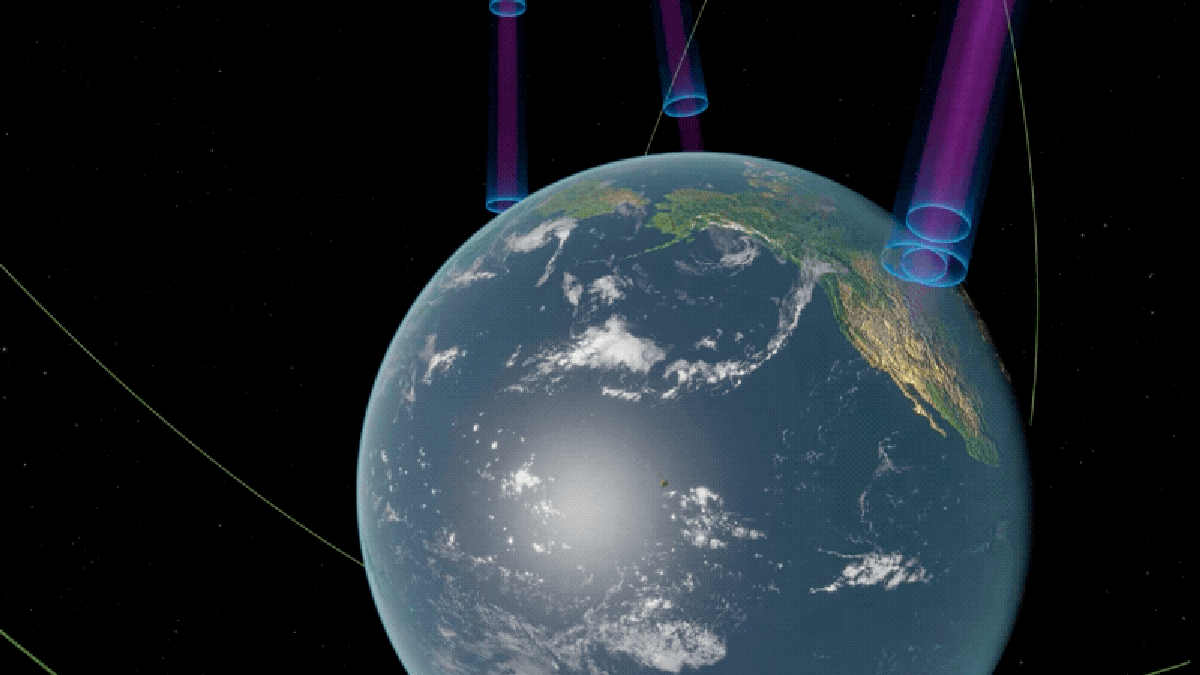
According to a video published in March by Virtus, a satellite constellation operating in Molniya orbit, or a highly elliptical orbit, will beam the solar power to Earth. The companies will launch hexagonal-shaped satellites into space using reusable rockets, after which robots will snap the satellites together into a circular array that, when completed, will be anywhere from 0.3 to 1.9 miles, or 0.5 to 3 kilometers, wide. These arrays will then transmit power to ground stations 1.2 miles (2 kilometers) in diameter and with the ability to provide power to 150,000 customers.
Advertisement
Advertisement
“This partnership is a significant step towards providing clean, low-cost energy to our planet and unlocking the potential of cislunar space,” said Virtus Solis CEO John Bucknell in a press release. “By combining our breakthrough technologies with Orbital Composites’ expertise, we aim to revolutionize space-based solar power and accelerate the transition to a sustainable energy future.” By cislunar space, Bucknell is referring to the space environment between the Earth and Moon.
Collecting solar power in space and beaming it down to planet Earth might seem like a farfetched idea, but researchers from the California Institute of Technology made a huge leap with the technology earlier this month. The researchers conducted a ground-breaking power transfer experiment using the Microwave Array for Power-transfer Low-orbit Experiment, or MAPLE, which is a small prototype aboard the in-orbit Space Solar Power Demonstrator (SSPD-1) that launched this past January. The SSPD-1 collects solar energy, converts it to DC electricty, and transmits it using constructive and destructive interference. Using the orbiting technology, the researchers were able to light up LEDs located on the roof of Gordon and Betty Moore Laboratory of Engineering on Caltech’s campus in Pasadena.
The ability to wirelessly transmit solar power from space has huge implications for renewable energy. This new partnership between Orbital and Virtus demonstrates that public and private interest in space-based solar power is certainly there. Japan also plans to start using space-based solar power by the mid-2030’s, with a Japanese research team is looking to pilot the technology in 2025 via a public-private partnership. Last year, researchers at Xidian University in China finished building a massive tower for space-based solar power experiments.
For more spaceflight in your life, follow us on Twitter and bookmark Gizmodo’s dedicated Spaceflight page.
Services Marketplace – Listings, Bookings & Reviews